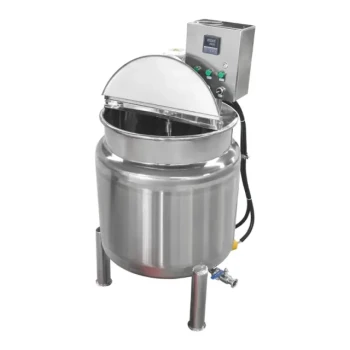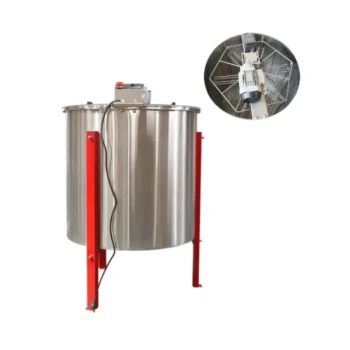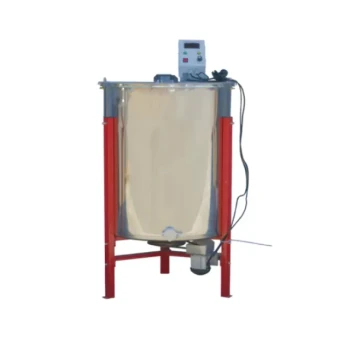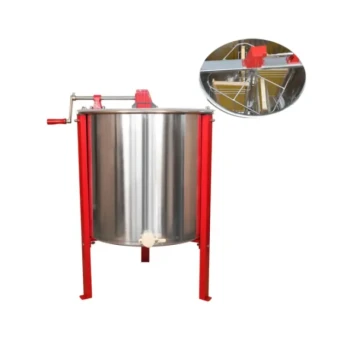For the enterprising beekeeper, harvesting propolis offers a straightforward way to increase the profitability and utility of a hive beyond simple honey production. By collecting this resinous "bee glue," you can create a new revenue stream through direct sale or value-added products, or produce a powerful antimicrobial tincture for personal use, making your beekeeping practice more rewarding and self-sufficient.
Propolis harvesting transforms a hive's natural maintenance activity into a valuable resource. It allows a beekeeper to diversify their output with minimal investment, but it must be balanced with the hive's fundamental need for this material to survive the winter.
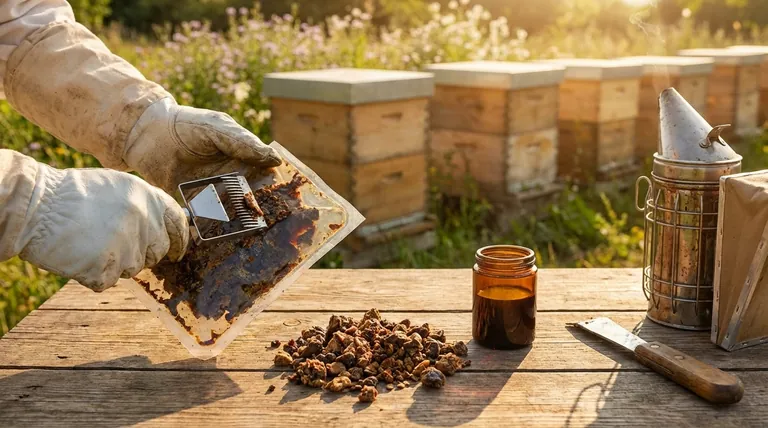
The Core Benefits of Harvesting Propolis
Harvesting propolis is about more than just collecting another substance from the hive. It represents a deeper, more holistic approach to beekeeping that leverages the full spectrum of the colony's natural products.
A New Revenue Stream
For many, beekeeping is a passion project that can be expensive. Selling propolis, either in its raw form or as a finished tincture, can significantly boost earnings from each hive.
This additional income can help make your apiary self-funding, covering the costs of equipment, treatments, and expansion. It provides a valuable, high-demand product that complements honey and wax sales.
A Natural Antimicrobial for Personal Use
Propolis is renowned for its potent antimicrobial, anti-inflammatory, and antioxidant properties. You can easily create your own health supplement directly from your harvest.
The process involves steeping the raw propolis in high-proof ethyl alcohol (at least 70%) for a minimum of two weeks. After straining the mixture, the resulting liquid tincture can be added by the drop to tea or water.
Enhancing Hive Management
The act of harvesting gives you another data point on hive health. A colony that is vigorously producing propolis is often a strong, thriving one.
By providing a dedicated propolis trap, you are also channeling the bees' natural instinct to seal drafts and cracks into a single, easy-to-manage location.
The Principles of Sustainable Harvesting
Successful propolis harvesting is done in partnership with the bees. The beekeeper's goal is to collect the surplus, never what the colony needs to protect itself.
Prioritizing Hive Health
The cardinal rule is to only harvest from strong, thriving hives. A weak colony needs all its resources, including its propolis, to regulate its environment and defend against pathogens.
Only collect from hives that are producing an excessive amount of propolis, indicating they have resources to spare.
Understanding the Bee's Perspective
Bees produce propolis to serve critical functions within the hive. They use it to seal cracks, waterproof the interior, insulate against drafts, and reduce the size of the entrance to defend against invaders.
By understanding these triggers, you can encourage production. A propolis trap is essentially a plate filled with small gaps that the bees instinctively feel compelled to fill.
Timing is Everything
Propolis production often peaks in late summer and early autumn as bees prepare their home for the coming cold. This is the ideal time to have a trap in place.
However, all harvesting must stop well before the first frost. The colony needs a full supply of propolis to seal any cracks and create a thermal envelope to survive the winter.
A Practical Guide to the Trap Method
The most common and efficient way to harvest clean propolis is with a specially designed trap.
The Propolis Trap
A propolis trap is typically a flexible, reusable plastic mat filled with small grooves and gaps. When placed on top of the frames in place of an inner cover, it creates the kind of drafty, light-filled space that bees are driven to seal.
These traps are inexpensive and can be used year after year.
Step 1: Installation and Collection
Check your hive to ensure it is strong and populous. In late summer or early fall, place the propolis trap directly on top of the uppermost hive box. Place the outer cover on top of the trap.
Leave the trap in place for one to two weeks, or until you can see that the bees have filled most of the gaps with propolis.
Step 2: Freezing and Removal
Once the trap is full, remove it from the hive. Place the entire trap into a plastic bag and put it in a freezer for several hours.
Freezing makes the propolis extremely brittle. Once frozen, you can simply twist or bend the flexible mat, and the propolis will crack and fall off, ready for storage or processing.
Understanding the Trade-offs
While beneficial, propolis harvesting requires careful consideration to avoid harming your colonies.
Risk of Over-Harvesting
The most significant risk is taking too much propolis or harvesting too late in the season. Removing this vital insulation can leave the hive vulnerable to drafts and moisture, severely impacting its ability to survive the winter.
The Labor-to-Reward Ratio
Though the process is simple, it is an additional task in your beekeeping schedule. You must decide if the financial or personal health benefits are worth the added time and effort compared to focusing solely on honey production.
Potential for Allergies
While propolis is a powerful health product, some individuals can have an allergic reaction to it. When making or distributing a tincture, it is crucial to include a warning and advise people to test a small amount first.
Making the Right Choice for Your Apiary
Deciding whether to harvest propolis depends entirely on your goals as a beekeeper.
- If your primary focus is maximizing profit: Harvesting propolis is a low-cost, high-value addition to your product line that can make your operation more financially stable.
- If your primary focus is self-sufficiency and natural health: Creating your own propolis tincture provides direct, unadulterated access to one of the hive's most powerful natural medicines.
- If your primary focus is minimal-effort beekeeping: You may choose to forgo harvesting to concentrate exclusively on honey production and essential hive maintenance.
By viewing propolis as a valuable, harvestable resource, you deepen your role from a simple keeper to a true steward of the hive's complete output.
Summary Table:
| Benefit | Key Takeaway | Best For |
|---|---|---|
| New Revenue Stream | Sells for high value, complements honey/wax sales | Commercial beekeepers seeking profitability |
| Natural Health Product | Powerful antimicrobial tincture for personal use | Self-sufficient beekeepers focused on natural health |
| Enhanced Hive Management | Indicates strong colony health, channels bee behavior | All beekeepers wanting deeper hive insights |
| Sustainable Practice | Uses surplus propolis without harming winter preparation | Responsible beekeepers prioritizing colony welfare |
Ready to Maximize Your Hive's Potential?
As a commercial beekeeper or equipment distributor, you understand the value of diversifying your apiary's output. HONESTBEE supplies the professional-grade beekeeping supplies and equipment you need to implement propolis harvesting successfully.
We provide: • High-quality propolis traps for efficient, clean collection • Essential harvesting tools that streamline your workflow • Wholesale-focused pricing that supports your commercial operations
Let us help you transform your hive's natural resources into profitable, sustainable products. Contact our expert team today to discuss your specific needs and discover how our wholesale solutions can benefit your apiary.
Visual Guide
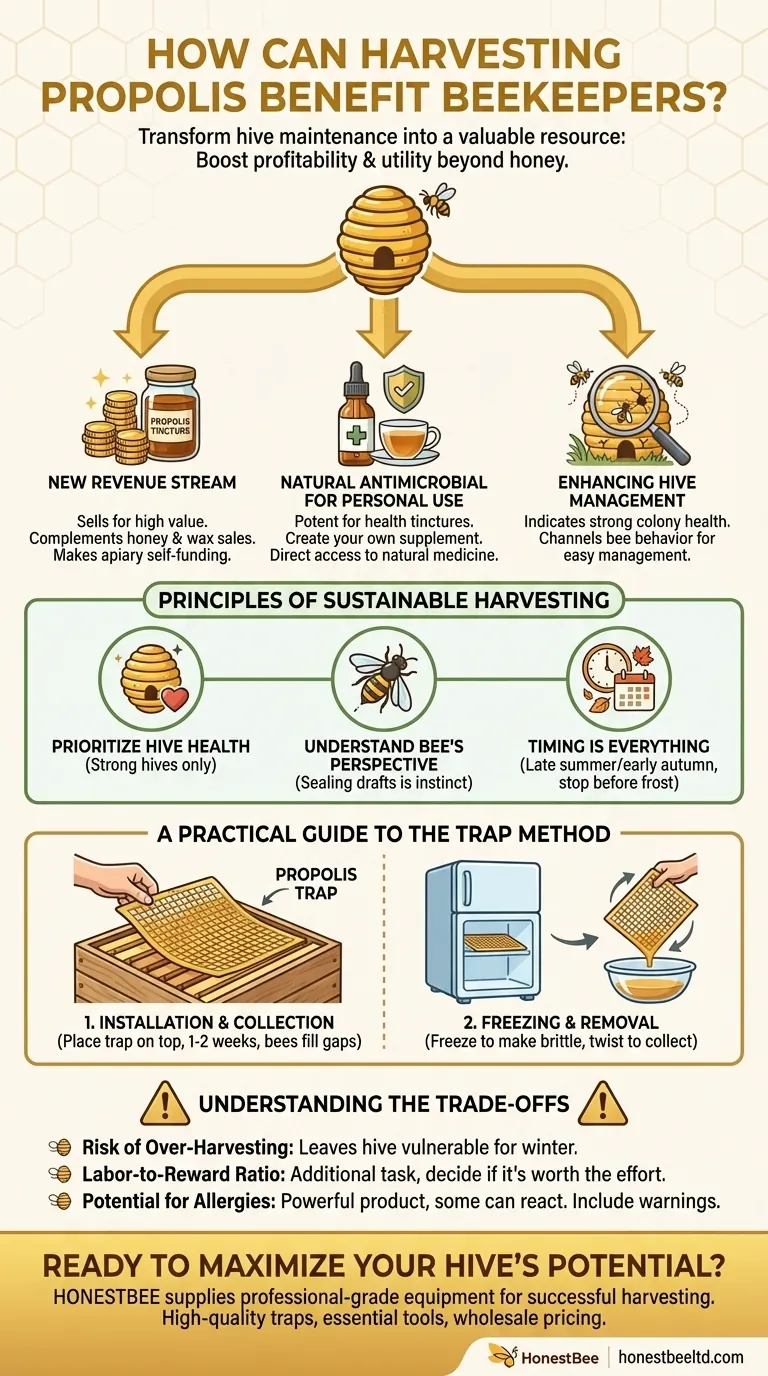
Related Products
- Stainless Steel Pivoting Honey Uncapping Fork with Plastic Handle
- Electric Flatting and Embossing Machine with Tray for Beekeeping
- 10L Stainless Steel Electric Honey Press Machine
- Stainless Steel Manual Honey Press with Guard for Pressing Honey and Wax
- Stainless Steel Manual 8 Frame Radial Honey Extractor Machine for Beehives
People Also Ask
- What is the best way to uncap honey? Find the Perfect Tool for Your Hives
- What is the use of an uncapping fork? A Precision Tool for Hive Management and Honey Harvesting
- What is the recommended practice when using plain knives for uncapping? Master the Two-Knife Method for a Perfect Harvest
- What is the best method for uncapping honey? A Guide to Speed vs. Comb Preservation
- What is the primary use of an uncapping fork in beekeeping? A Guide to Precision Honey Harvesting







